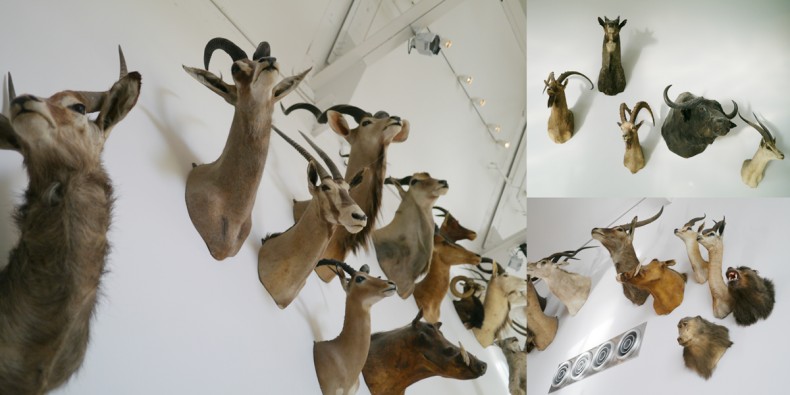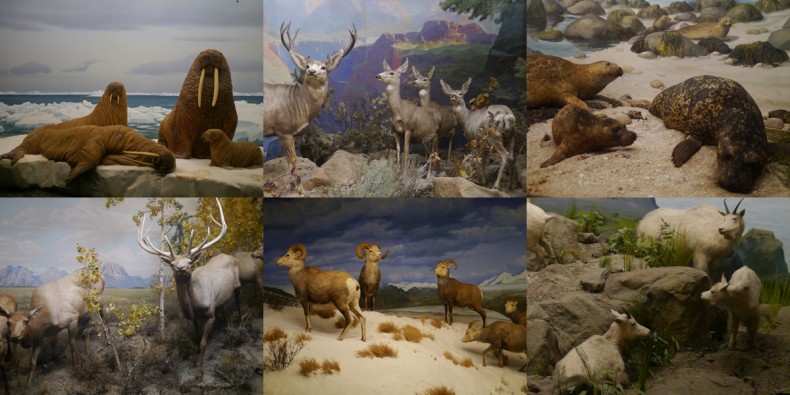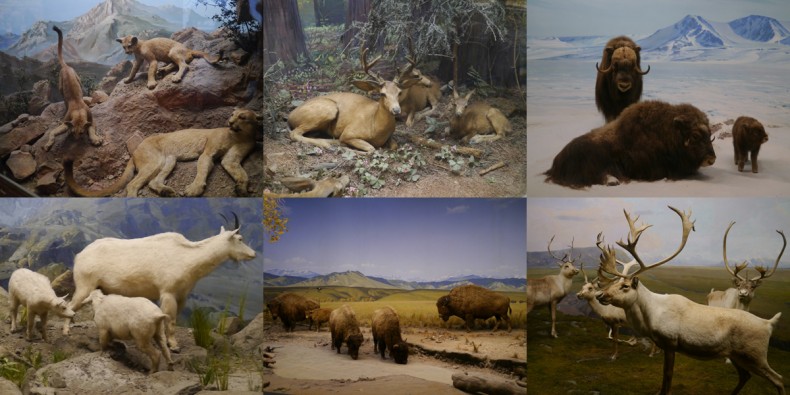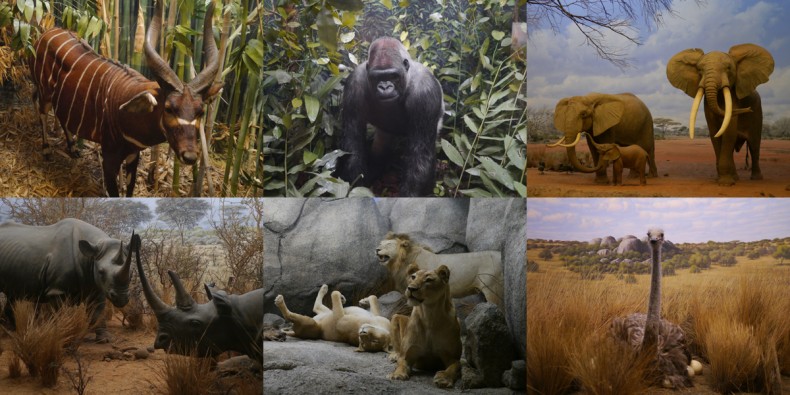Dec 31, 2013 Life, Death, and Taxidermy

Taxidermy could use a PR makeover. Unless you’re a card-carrying member of the NRA, the ancient craft is kitsch at best. At worst, cruelty on parade. But when I visited the Natural History Museum last weekend, the horned specimens could almost pass as noble until I reached to the soulful, sad-eyed ape. What a buzzkill.
Yet only steps away at the Hall of North American Mammals, not-so-distant relatives of the mounted heads have a completely different effect. Stuffed, preserved, and posed in dioramas, the carcasses provide access that L.A. Zoo residents can’t possibly match. They possess eternal life that Disneyland’s Audio-Animatronic versions will never dream of.
And after one stops marveling at the eternally sparkling eyes and just-so skin, there is the mock nature, painted backgrounds, and other notions to ponder. Whose anonymous hands and eyes envisioned and created these jaw-dropping displays? Does anyone possess this type of Old World craftsmanship any more? Can such exhibits be created in today’s moral climate anyway? Where are the bullet holes? (The answers to the first three questions can be found at the NHM website.)
Proposed in the Grand Lodge of Masons of California in 1910 and completed in 1913, the structure was originally intended to be the Los Angeles County Museum of History, Science, and Art. The art was spun off to provide the basis for LACMA in 1953–leaving the Natural History Museum with its current focus. But the habitat dioramas continue to package all three original disciplines to a T.
The sweeping, surreal, and hand-painted backdrops are truly artistic. They not only distract the viewer from the unsavory reality of the carefully positioned corpses but transport him or her into other times and continents. Kind of like a blacklight poster or mural on the side of a ’70s van. (The taxidermy is pretty mind-boggling, too.)
I couldn’t stop taking pictures. At first I looked for angles that hid the reflections of light on the protective glass shield–you should have seen some of the visitors climb over the barriers to pose for terrible, back-lit photos–but eventually I came to embrace them. Those subtle flashes of color actually capture both the moment and the spirit of the displays more accurately. It’s not like I’m trying to fool anyone into thinking I’ve been on safari.
These days the NHM tries to attract non-schoolchildren to the storied campus by booking indie rock bands and DJs at after-hours events, but I find the extra layers of art, irony, and hipsters distracting. Life and death, past and present, reality and illusion, high art and low culture–there’s plenty to ponder in each diorama. Placed firmly at the center of so many symbolic crossroads and permanently frozen in time, it’s like New Year’s Day every day for perpetuity.





